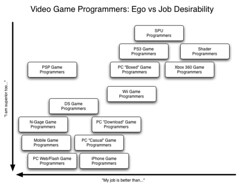I’ve been spending some time with Renoise recently, and this LADSPA plugin called Autotalent that acts as an auto-tuner / real-time pitch corrector. For a while I was playing around with it using pre-recorded samples, but the other night I thought it would be fun to try it out live.
Unfortunately I couldn’t get my motherboard to work with any of my (analog) microphones, so I pulled out an old Logitech USB microphone I had for my Playstation 2. Linux recognized it, and I was able to record, but then I discovered that Renoise has an unusual shortcoming: it does not support monaural input sources. Well, this is Linux.. there must be a way to make this work, right?
Sure enough, there is! I dunno if this was the smartest way to get it working, but I got Renoise to recognize the mic as a stereo microphone if I configured a virtual pcm device in in ALSA, ran a Jack server with this virtual pcm as the capture device, and then reconfigured Renoise to use Jack instead of ALSA. The latency was noticeable, but still good enough to allow me to do my own T-Pain and Wallpaper renditions.
Here’s how it’s done:
$ arecord --list-devices
card 2: Microphone [Logitech USB Microphone], device 0: USB Audio [USB Audio]
Subdevices: 1/1
Subdevice #0: subdevice #0
$ cat /etc/asound.conf
pcm.stereo_capture
{
type route
slave.pcm hw:2
slave.channels 1
ttable.0.0 1
ttable.1.0 1
}
$ sudo jackd -d alsa -P hw:0,0 -C stereo_capture
